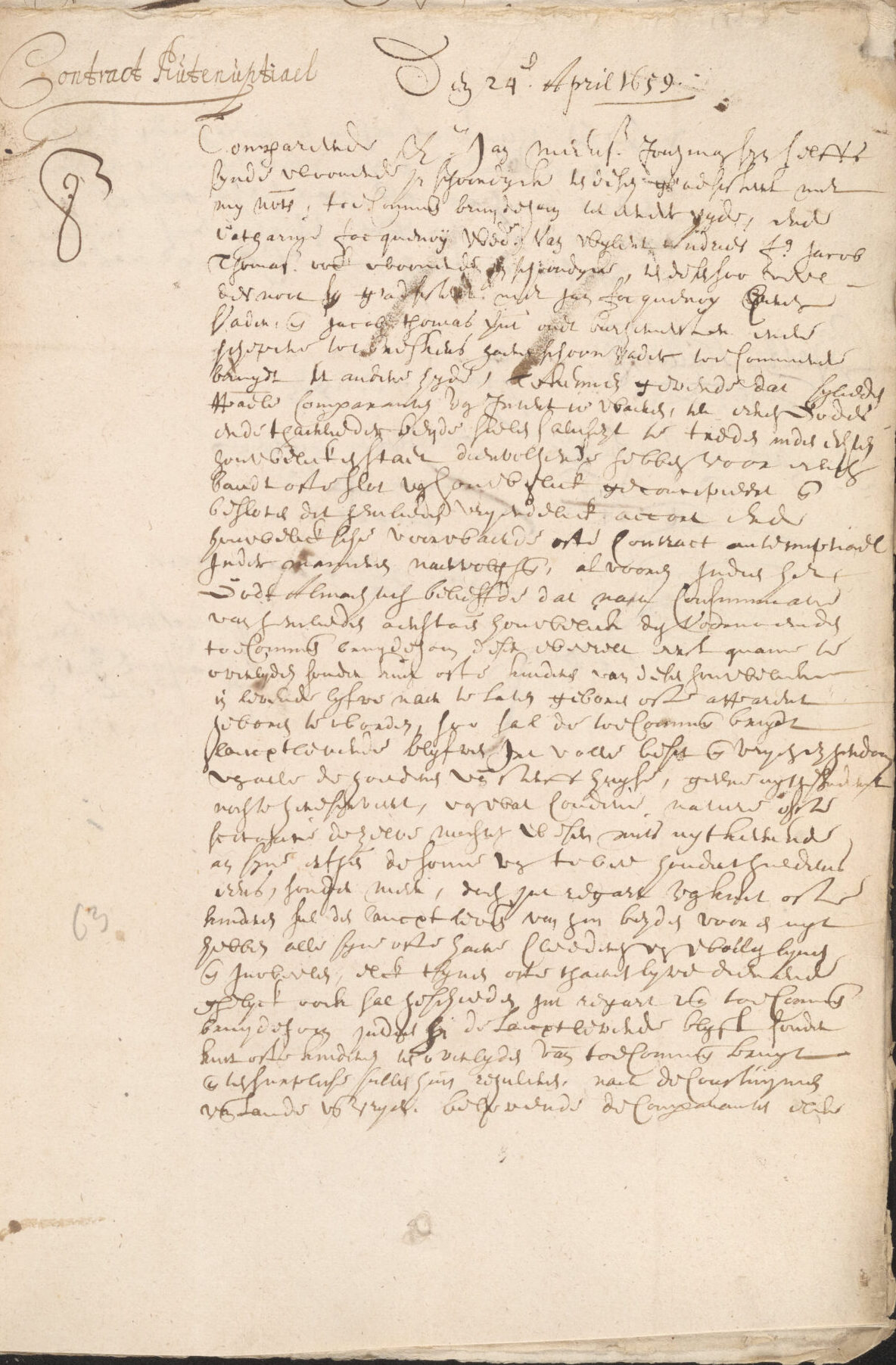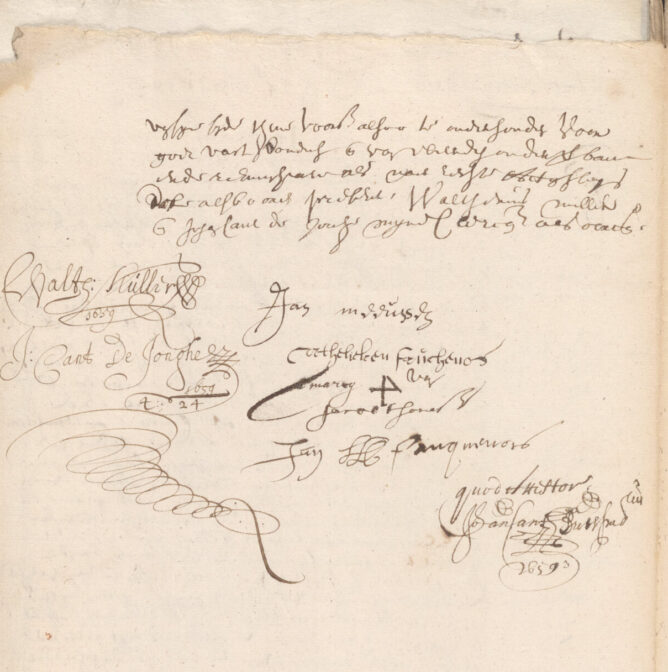In some cases, couples made a prenuptial agreement when they married. Often, this was the case when at least one of the spouses had assets to protect, or when one of the spouses was richer than the other. The typical arrangement was that if one of them died without children, that person would receive a sum of money while the survivor kept the rest. The sum reflected each spouse’s financial situation at the start of the marriage. Another reason to make a prenuptial agreement is if one or both of the spouses already had children from a previous marriage.
Prenuptial agreements were drawn up before a notary (in places that had them) or before the aldermen’s court, where they can be found in the series of voluntary records. Prenuptial agreements were usually drawn up in the period between the marriage banns and the marriage. Since notarial or court records are organized chronologically, this makes them easy to search for even when the notarial or voluntary records are not indexed.
Prenuptial agreements are a wonderful source of information. They can contain information about the spouses’ places of origin, parents, economic circumstances, and often contain both their signatures.
Example: Jan Meeusen and Catharijne Fockquenoij
This marriage contract between Jan Meeussen and Catharijne Fockquenoij was registered in Sluis on 24 April 1659 before notary Johan Cant. The record shows that Jan was a single man who lived in Schoondijke, and that Catharine was the widow of Andries Thomas, son of Jacob, and was also living in Schoondijke. She was assisted by Jan Fockenoij her father and Jacob Thomas, former mayor and alderman of Breskens, her father-in-law. The contract then goes on to describe who would inherit depending on who died first and whether they had any children.
This marriage contract gave us the name of the father of Catharijne and her previous husband, allowing us to trace her family back in time. It also provided the signatures of Jan, Catharijne and Catherijne’s father, making them some of the earliest ancestors I have found signatures for.


Marriage contract between Jan Meeusen and Catheleen Fauquenois, 24 April 1659. 1
Source
- Johan Cant de Oude, notary public (Sluis), minutes, 1659, prenuptial agreement Jan Meeusen and Catheleen Fauquenois (24 April 1659); call no. 1844, Court records, Orphan Chambers, and Notarial Records of Zeeuws-Vlaanderen, Record Group 11, Zeeuws Archief, Middelburg; finding aid and scans, Zeeuws Archief (https://www.zeeuwsarchief.nl/ : accessed 24 August 2019).

